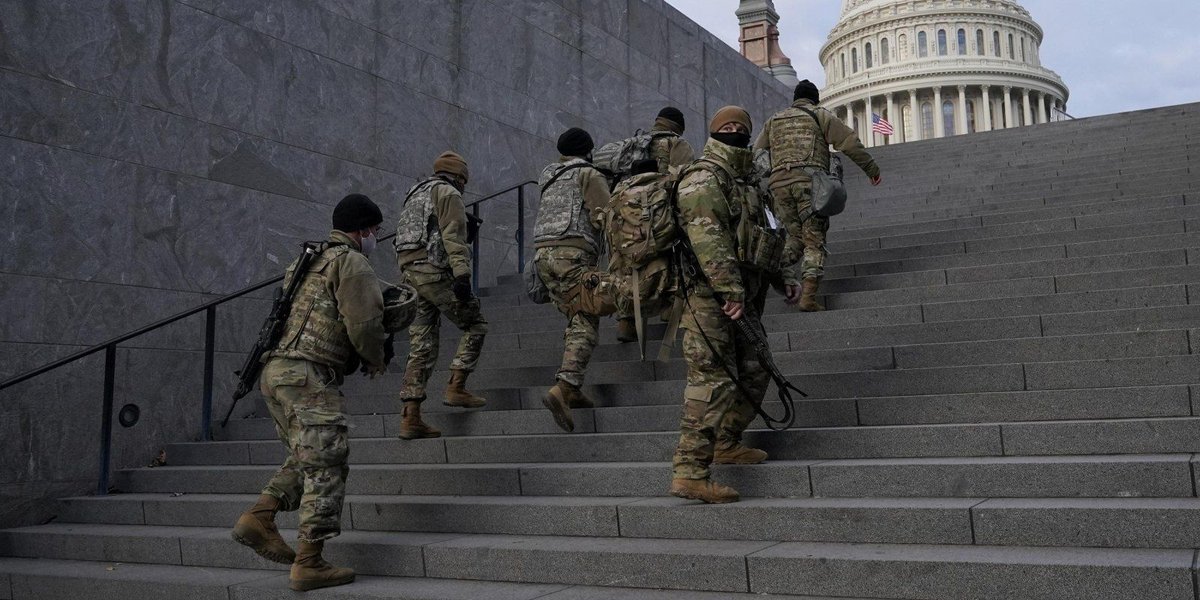WHAT DOES THE NATIONAL GUARD DO?
By Buddy Blouin

Advertisement
What does the National Guard do? As a general overview, the National Guard helps serve the United States of America by assisting with a range of operations within their respective states. This includes emergency/disaster response, humanitarian assistance, quelling civil disorder, securing our borders, preventing the entry of drugs, and so much more.
Becoming a National Guardsman means serving in either the U.S. Army or U.S. Air Force (USAF) in a different capacity that's focused on domestic issues. But there are still cases in which deployment may occur and require National Guardsmen to travel overseas and engage in combat.
When not deployed, it’s typical that Guardsmen will serve one weekend per month and two weeks per year in some capacity, with a focus on training. There are also community service projects, security details, and other opportunities that arise.
It’s also important to consider that the capacities of the Air National Guard are more focused on aerial needs as they arise. Furthermore, just as Soldiers deploy on land, you’ll find more enlisted members of the Army National Guard dealing with situations down below.
Although this is an overview of responsibilities, there are others that may arise. For most, service is part-time; however, some states may provide the capacity for full-time service depending on the nature of the work and needs of the region.
Read next: National Guard Requirements - Do You Qualify?
What Does the National Guard Do When Deployed?
Deployment can occur when the governor of a state or the President of the United States decides that the National Guard is needed. There are some overseas missions; however, the primary focus remains within the Guard’s individual state. Some common reasons this happens include:- Response following a natural disaster, such as a hurricane, wildfire, or blizzard.
- Helping keep the peace or restore order during and after civil unrest or demonstrations.
- Assistance in bolstering efforts at U.S. borders.
- Any other necessary response following a state of emergency in which National Guardsmen are needed.
A Snapshot of Stateside Service
Serving in the National Guard means helping America be all that it can be. What the National Guard does is assist in a unique way as an integral part of the overall U.S. military. Unlike other units, such as the Reserves, National Guardsmen specifically serve their individual states. This is evident when disaster strikes, but there are other functions that National Guardsmen also entertain. However, during a state’s time of need, it’s not uncommon to find the National Guard doing any, if not all, of the following:- Distributing food and supplies.
- Conducting wellness checks.
- Helping transport citizens to healthcare facilities following a disaster.
- Bolstering law enforcement during times in which they may otherwise be spread thin.
Advertisement
How To Join the National Guard
Understanding the duty before you is an important step before enlisting in the National Guard. If you’re ready to move forward, here’s what you’ll need to do to become a National Guardsman:- Fill out a contact form online. From here, a recruiter will get in contact with you to begin your process.
- If the conversation goes well and it seems that you’d be a good addition, you’ll also need to take the Armed Services Vocational Aptitude Battery (ASVAB) test. The ASVAB will help determine your career path by showing you which jobs you're eligible for within the National Guard.
- The third step in the process is enlistment. This will set your Basic Combat Training ship date, occupation, compensation, and when you’ll take your Oath of Enlistment.
- One of the last steps will be preparing for basic training. If you're a junior in high school, you can undertake a split training program before your senior year. However, for others, you’ll go into the Recruit Sustainment Program (RSP) one weekend a month to help you prepare for your life as a National Guardsman.
Image: AP Photo/Patrick Semansky
Written by
Buddy Blouin
Buddy Blouin is a Contributing Writer at VeteranLife.com
Buddy Blouin is a Contributing Writer at VeteranLife.com
Advertisement
SHARE:



